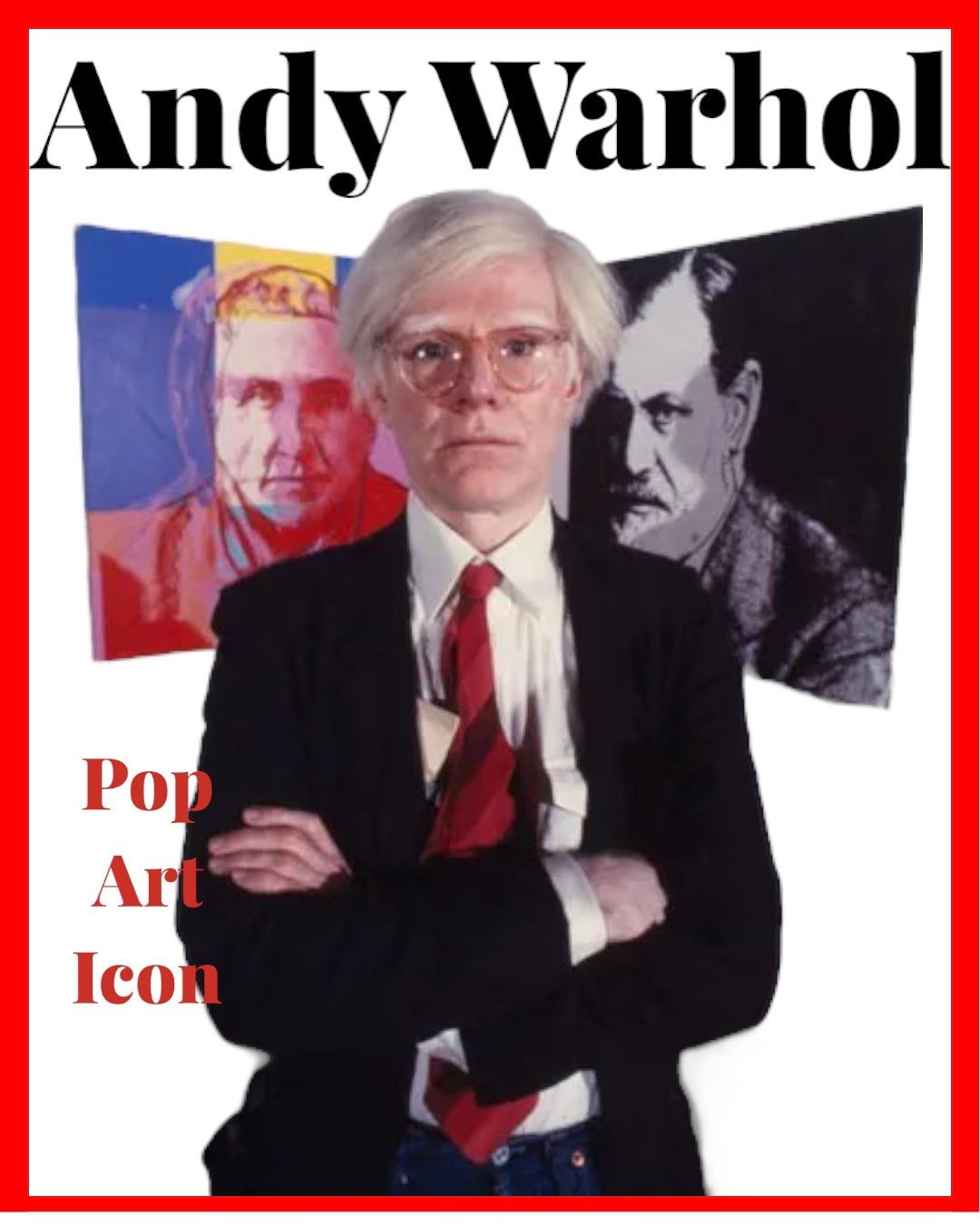
Pop Art Icon: Exploring the Life and Legacy of Andy Warhol
Share
Pop Art Icon: Exploring the Life and Legacy of Andy Warhol
Andy Warhol, born Andrew Warhola on August 6, 1928, in Pittsburgh, Pennsylvania, was an American artist known for his groundbreaking work in the realm of pop art. He was a leading figure in the art world during the 1960s and is remembered for his iconic paintings of everyday objects and celebrities. In this blog post, we will delve into the life and legacy of Andy Warhol, exploring his contributions to the art world and his enduring impact on popular culture.
Early Life and Artistic Beginnings
Andy Warhol was born into a working-class immigrant family of Ruthenian (Carpatho-Rusyn) descent. He showed early artistic talent and studied art and design at Carnegie Mellon University before moving to New York City in 1949 to pursue a career as a commercial artist. He worked as a successful illustrator for various magazines and advertising agencies, developing his distinctive style characterized by bold, graphic compositions and vibrant colors.
In the late 1950s, Warhol started to transition from commercial art to fine art, and his work began to gain attention in the art world. He experimented with different artistic mediums and techniques, including drawing, painting, printmaking, and collages. He was known for his innovative approach to art, often challenging traditional notions of art and aesthetics.
Pop Art and the Factory
In the early 1960s, Warhol found his signature style and became a leading figure in the pop art movement, which emerged as a reaction against the abstract expressionism that dominated the art world at the time. Pop art celebrated the popular culture of mass media, consumerism, and advertising, and Warhol's work reflected this aesthetic, elevating everyday objects and celebrities to the status of art.
One of Warhol's most famous works is his Campbell's Soup Cans series, which he created in 1962. These paintings featured a grid of colorful, repetitive images of Campbell's Soup cans, a ubiquitous household item at the time. This series, along with other works such as his Coca-Cola paintings and Marilyn Monroe portraits, brought Warhol international recognition and established him as a leading figure in the art world.
Warhol's studio, known as "The Factory," became a hub of artistic and social activity, where he produced his art and hosted parties attended by artists, musicians, celebrities, and other creative personalities. The Factory became an emblem of Warhol's unique approach to art-making, blurring the boundaries between art and commerce, and challenging traditional notions of authorship and originality.
Beyond the Art World
Warhol's influence extended beyond the art world and into popular culture. He was known for his flamboyant personality, distinctive appearance, and witty remarks, and he became a celebrity in his own right. Warhol was also involved in music, managing the influential rock band The Velvet Underground and designing album covers for various artists.
Warhol's impact on popular culture was evident in his work's subject matter, which often featured famous personalities such as Marilyn Monroe, Elvis Presley, and Elizabeth Taylor. He explored the relationship between fame, consumer culture, and the individual, questioning the concept of celebrity and the commodification of fame.
Legacy and Impact
Andy Warhol's legacy as an artist continues to endure today. His groundbreaking work in the realm of pop art and his innovative approach to art-making continue to influence artists and shape contemporary art. Warhol's ideas about the intersection of art, commerce, and popular culture are still relevant, as they continue to challenge traditional notions of art and aesthetics.
Furthermore, Warhol's influence extends beyond the art world and into popular culture, where his iconic images and persona continue to be recognized and celebrated. His work has been widely exhibited.
